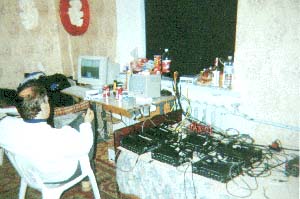|
Leonid MAC |
| home |
| View the shower |
| Mission Brief |
| Science Update |
| Media Brief |
| links |
 Pete S. Gural,
Pete S. Gural, SAIC 
Last updated: October 2002
Brief Biographical Information: Received an MS degree in Astronomy from graduate work at the University of Arizona studying mass loss in red giant stars. Moved into the scientific programming and simulation arena working for Computer Sciences Corp, ENSCO, and Physical Dynamics on satellite onboard orbit determination, ocean wave spectral modeling, adaptive processing, and non-acoustic ASW. Joined Science Applications International Corp in 1985 working on underwater acoustics, hull modeling, and modal analysis. In recent years in support of a SETA contract with DARPA's Sensor Technology Office has been involved in pulse-doppler radar performance analysis, clutter modeling, and the development of the Dual-Polarization Adaptive Seeker Model used by various government contractors and agencies.
Research: As part of the Canadian/USAF team of researchers in Mongolia/Australia during the 1998 Leonids, provided the first remotely fielded automated meteor counting system used for reporting meteor flux rates from the storm. As an independent consultant, MeteorScan was developed and hosted on a Macintosh G3 computer designed to process night sky video imagery in real time, detecting transient linear tracks (meteors) of less than one second duration. The algorithm included a localized Hough transform to narrow the number of MLE hypotheses for detection, associating each track to a specific meteor shower radiant. Research on Leonid MAC: Real-time meteor detection Under an SAIC contract to the SETI Institute and the University of Western Ontario, the MeteorScan software has been upgraded to support both the air and ground based campaigns for the 1999 Leonid storm. Mr Gural will be onsite in La Palma, Canary Islands, Spain supporting six remote automated meteor counting stations employing MeteorScan as well as enhancing the software to provide directional cues for the airborne instrumentation.
|


